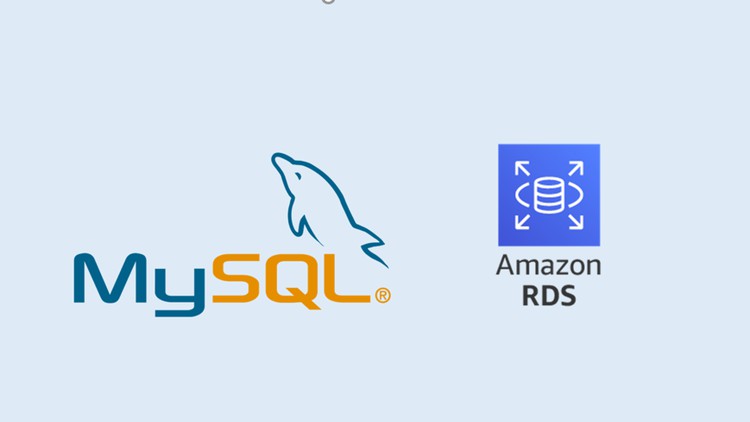Extreme SQL Course From Beginners to Master
- Description
- Curriculum
- FAQ
- Reviews
This stand-alone master course will provide you with needed the training to become a professional SQL user, starting from a complete beginner’s level! You will gain the knowledge required to operate databases, gaining hands-on practice using RDS MySQL on Amazon Web Services (AWS). Through in-depth theory and practical application, you will become a professional in SQL data analysis with ease.
[The goal of this course]
-You will learn how to build a functioning MySQL environment using AWS.
-You will learn necessary SQL commands and SQL best practices
-You will gain a practical understanding of how to conduct data analysis using SQL queries.
Master MySQL SQL and gain confidence in operating AWS services using databases for a an exciting future in data analysis, application development and much more.
[Concept of this course]
Combining theory and practice maximizes the learning effect.
1. Database and Acquisition of SQL knowledge
2. Hands-on training Practical Training
3. Business Case Analysis
[Section list]
Your First MySQL DB and SQL Experience
You will experience SQL operations by implementing MySQL database construction using AWS
Databases and SQL Overview
You will learn basic knowledge about databases and SQL.
Create Database
You will learn to use SQL to manipulate queries to create databases and tables.
Insert and update data
You will learn how to register, update, and delete data from tables using SQL.
SQL Coding Know-how
You will learn about the best way to code SQL.
Database detail settings
You will learn how to set up tables in detail, including associations between tables and setting options.
Database setting exercises
You will conduct case study exercises using SQL know-how on database construction
Restore database
You will create a database to be used in the future SQL operation learning using the migration file.
SQL Data Extract Know how
You will learn to extract data using condition statement such as WHERE and HAVING
SQL Logical Operators
You will learn to operate data using various SQL Logical Operators such as AND, OR, Equal sign, inequality sign
SQL Functions
You will learn how to perform simple operations and statistics such as numerical calculations and summation.
JOIN and UNION
You will learn how to join tables using JOIN and how to join SELECT statements using UNION.
VIEW
You will learn how to use VIEW is sets of complex queries that can be called up at any time.
Subqueries
You will learn how to use subqueries to concatenate multiple queries to create complex SQL queries.
Stored procedure
You will learn how to create a stored procedure that summarizes a series of operations on a database.
MySQL for Applications
You will learn how to use SQL in code for Application by Hands-on training to embed MySQL in your application.
[About AWS usage fees]
AWS usage fees will be incurred when implementing the lectures in this course, but we will try to keep the costs as low as possible.
-
1IntroductionVideo lesson
-
2Download the textText lesson
-
3Your First MySQL DB and SQL ExperienceVideo lesson
-
4Register for an AWS accountVideo lesson
-
5MySQL DB and SQL experience (1) (Building RDS)Video lesson
-
6MySQL DB and SQL experience (2) (Installing MySQL Workbench)Video lesson
-
7MySQL DB and SQL experience (3) (Connecting to and operating RDS)Video lesson
-
14Creating a DatabaseVideo lesson
In this lecture, we will create our first database schema using SQL.
-
15In the database Data typeVideo lesson
In this lecture, you will learn about the data types used in table creation.
-
16Add tableVideo lesson
In this lecture, we will create a table for the database schema we have created.
-
17Check the structure of the tableVideo lesson
In this lecture, we will review the structure of the tables we have created.
-
18Delete tableVideo lesson
In this lecture, you will learn about a query to drop a table that you have created.
-
19Delete databaseVideo lesson
In this lecture, we will delete the database we have created.
-
20SQL queries in this sectionText lesson
-
21Add data to the tableVideo lesson
In this lecture, you will learn how to query a table to add new data to it.
-
22SQL query from the previous lectureText lesson
In this lecture, you will learn how to query a table to add new data to it.
-
23Data addition taskVideo lesson
-
24Add data ExplanationVideo lesson
-
25SQL query from the previous lectureText lesson
-
26How to update dataVideo lesson
-
27SQL query from the previous lectureText lesson
-
28Data update IssueVideo lesson
In this lecture, we will discuss the challenges of learning more about data updates.
-
29Data update ExplanationVideo lesson
In this lecture, we will discuss how to answer queries for data updates.
-
30SQL query from the previous lectureText lesson
-
31How to delete dataVideo lesson
In this lecture, you will learn how to delete data.
-
32SQL query from the previous lectureText lesson
-
33Difference between DROP / TRUNCATE / DELETEVideo lesson
In this lecture, you will learn the difference between DROP vs TRUNCATE vs DELETE, which are query commands used to delete data.
-
34Delete table data_issueVideo lesson
In this lecture, we will discuss the challenges of learning more about data deletion.
-
35Table Data Deletion Assignment: ExplanationVideo lesson
In this lecture, we will discuss the query for answering the challenge of data deletion.
-
36SQL query from the previous lectureText lesson
-
37SQL Coding TipsVideo lesson
In this lecture, we will once again review good coding practices in SQL statements and how to deal with coding mistakes.
-
38Organize long codeVideo lesson
In this lecture, you will learn how to use Workbench to organize your code in an easy-to-read manner.
-
39SQL query from the previous lectureText lesson
-
40Primary key setting (1)Video lesson
In this lecture, we will review the configuration and role of the primary key when creating a table.
-
41Primary key setting (2)Video lesson
In this lecture, we will review the configuration and role of the primary key when creating a table.
-
42SQL query from the previous lectureText lesson
-
43Foreign key settings (1)Video lesson
In this lecture, we will review the configuration and role of foreign keys when creating a table.
-
44Foreign key settings (2)Video lesson
In this lecture, we will review the configuration and role of foreign keys when creating a table.
-
45Foreign key settings (3)Video lesson
In this lecture, we will review the configuration and role of foreign keys when creating a table.
-
46SQL query from the previous lectureText lesson
-
47Unique key settingsVideo lesson
In this lecture, we will review the setting and role of the unikey when creating a table.
-
48SQL query from the previous lectureText lesson
-
49Utilization of RollbackVideo lesson
This lecture explains how to use rollback to make changes, such as UPDATE, to a table you have created.
-
50SQL query from the previous lectureText lesson
-
51Add INDEXVideo lesson
In this lecture, you will learn how to set up an INDEX for efficient searching and check its usability.
-
52SQL query from the previous lectureText lesson
-
53Null value settingVideo lesson
In this lecture, we will review how to set NOT NULL in data and its usability.
-
54SQL query from the previous lectureText lesson
-
55Setting the default valueVideo lesson
In this lecture, we will review how to set default values in data and how to use them.
-
56SQL query from the previous lectureText lesson
-
57Case study 1 Database constructionVideo lesson
In this lecture, we will discuss a case study of database construction that you will try using the SQL manipulation commands that you have learned so far.
-
58【Answer1】 Creating a database of personnel informationVideo lesson
このレクチャーでは、人事情報データベースを作成していただきます。
-
59【Answer2】Creating the Employee Information TableVideo lesson
-
60【Answer3】Create a personnel evaluation tableVideo lesson
In this lecture, you will create a personnel evaluation table.
-
61【Answer1】Create a payroll information tableVideo lesson
In this lecture, you will create a payroll information table.
-
62SQL query from the previous lectureText lesson
-
63Database import (restore)(1)Video lesson
In this lecture, we will change the parameter group settings of RDS to use the database export feature.
-
64Database import (restore) (2)Video lesson
In this lecture, we will use the export function of Workbench to import (restore) the database that will be used in the SQL manipulation exercise.
-
65Database export (backup)Video lesson
In this lecture, we will review the export function to perform a database backup.
-
66ER diagram creationVideo lesson
In this lecture, we will use Workbench's ER diagramming feature to create an ER diagram for the imported database.

External Links May Contain Affiliate Links read more





